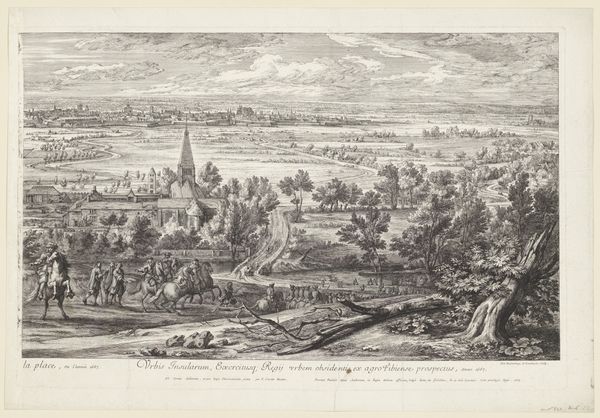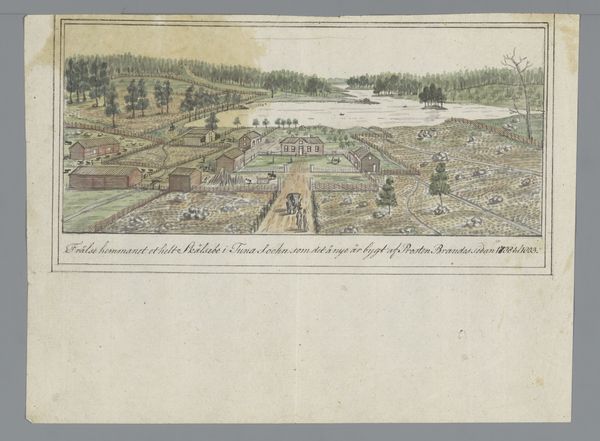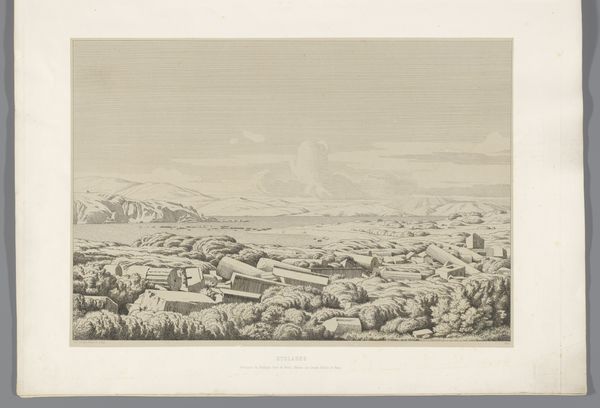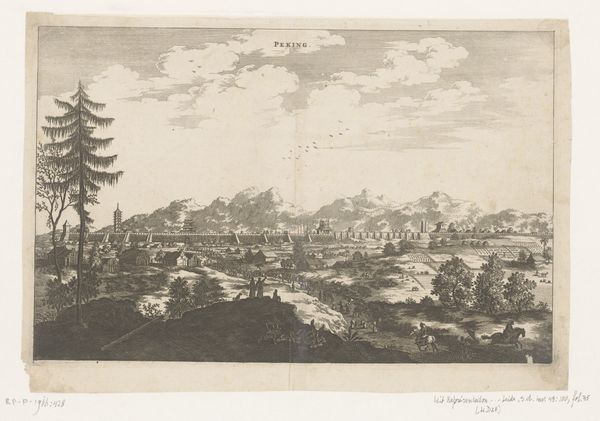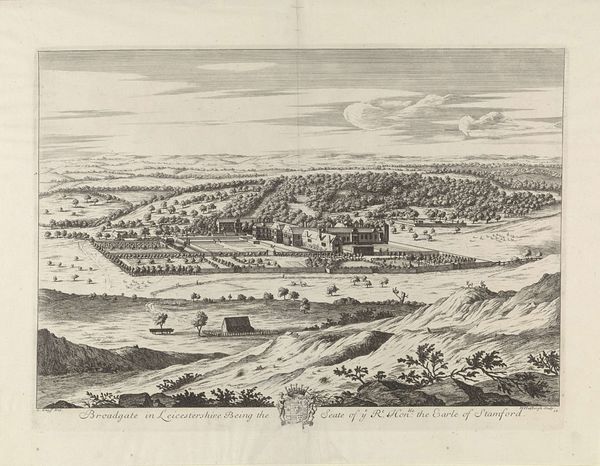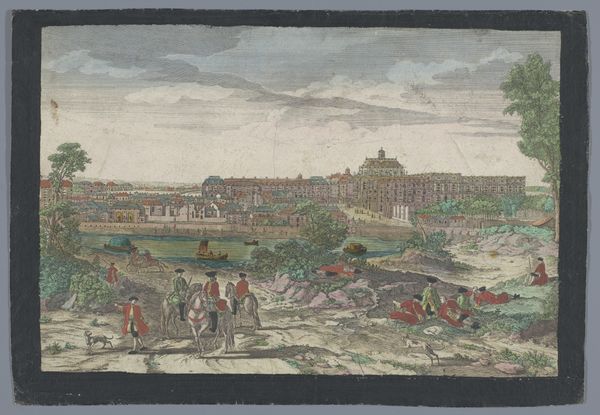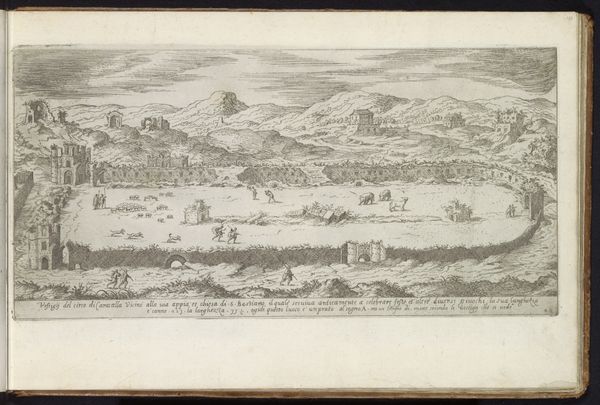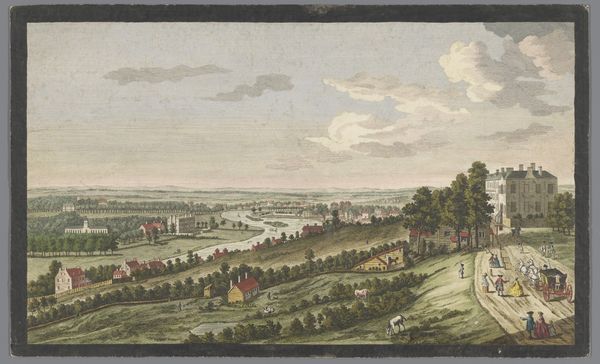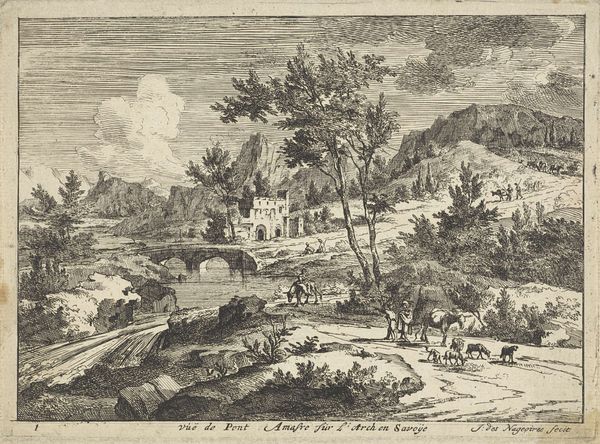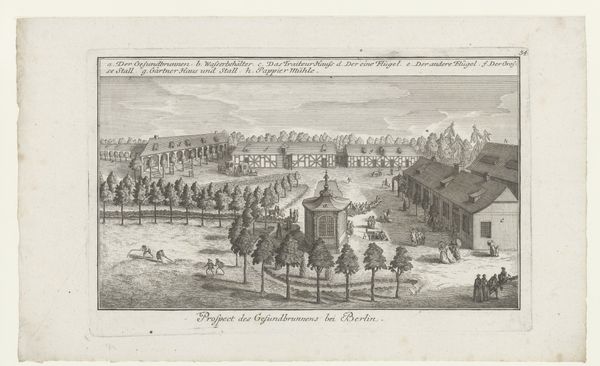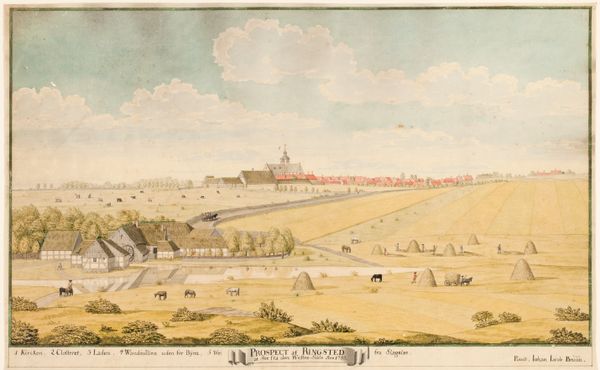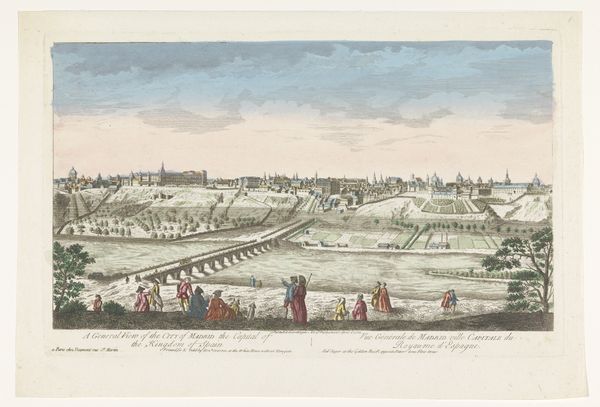
print, engraving
#
baroque
# print
#
landscape
#
cityscape
#
islamic-art
#
engraving
#
watercolor
Dimensions: height 290 mm, width 355 mm
Copyright: Rijks Museum: Open Domain
Editor: This print, "Gezicht op Ardabil," made around 1674 by Gaspar Bouttats, shows an aerial view of the city using engraving. I find it fascinating how they managed to depict so much detail; the print gives an impression of what life may have looked like centuries ago. What story does this artwork tell about its historical period? Curator: That's a perceptive observation! Bouttats’ engraving, beyond its aesthetic value, provides a glimpse into the socio-political landscape of 17th-century Persia. Notice how Ardabil, an important city for its Silk Road trade and religious significance, is presented. What kind of message is conveyed by choosing this specific city to portray? Editor: Perhaps, that Ardabil was seen as powerful and relevant? Was printmaking a way to share news and views about different places? Curator: Exactly. Consider how maps and cityscapes, widely circulated through prints, played a role in shaping European understanding—and often, misunderstandings—of the East. The very act of creating and distributing such images contributed to a broader European project of knowledge gathering, closely linked to emerging colonial ambitions. Do you see elements here that could be interpreted as idealized or even exoticized? Editor: I can see that. The figures in the foreground and the details, even if somewhat inaccurate, may give off an air of orientalism and European perspective. Curator: Precisely. The details Bouttats chose to emphasize shaped European viewers’ perceptions and potentially influenced diplomatic or even economic relationships. It's a reminder that art rarely exists in a vacuum; it reflects, reinforces, and sometimes challenges dominant ideologies. Editor: This engraving has been an eye-opener. Thank you, this makes me think about how visual information shapes public opinion in our world, even today. Curator: Absolutely! Analyzing this image gives clues on how knowledge, power, and representation intertwine in the historical contexts that give art a voice.
Comments
No comments
Be the first to comment and join the conversation on the ultimate creative platform.

